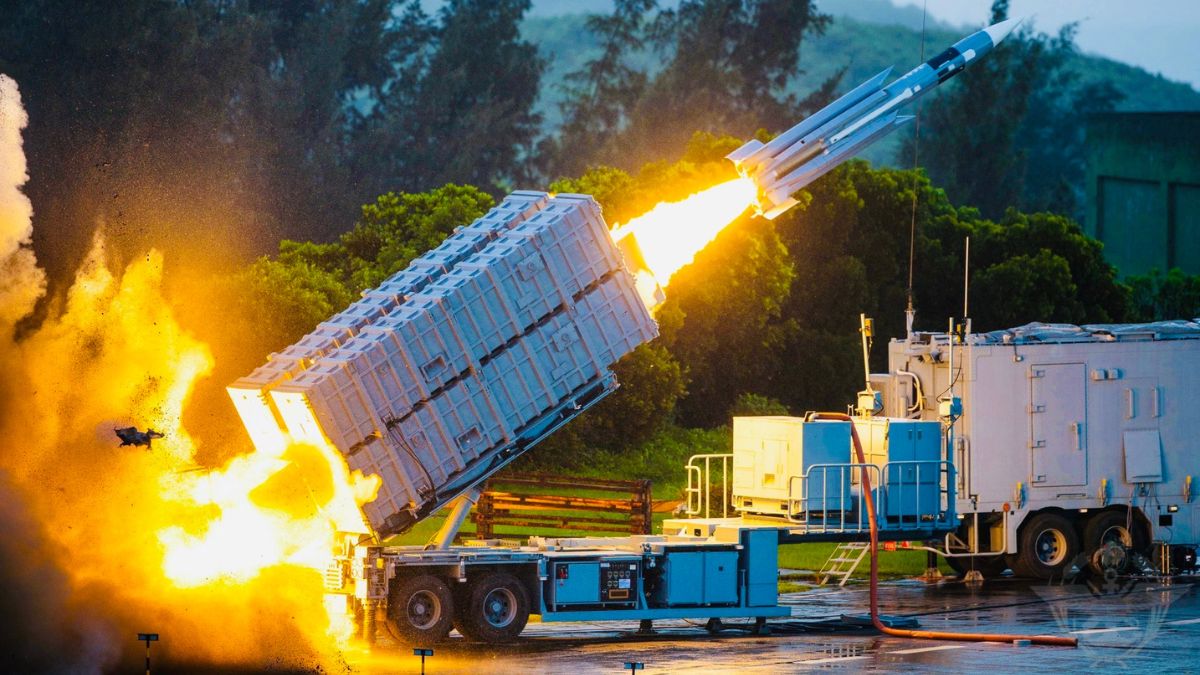WATCH: Taiwan Navy’s Extended-Range Hsiung Feng III Missiles: Why This Upgrade Matters

The extended-range version can reach targets up to 400 kilometers away, more than twice of the original version (Image courtesy: X.com/@CollinSLKoh)
After unveiling the third generation anti-ship missile Hsiung Feng III (HF-3) earlier this year, Taiwan’s Navy has quietly confirmed that an extended-range version of its most powerful anti-ship missile is already in service. The revelation came not through an official announcement, but in a Navy-produced video released on Facebook, a retrospective of July’s Han Kuang 41 war games.
The footage showed the new missile launch trucks operating by day and night, alongside drones and warships, hinting at Taiwan’s steadily growing deterrent capability.
What makes the new Hsiung Feng III significant?
The extended-range version of the HF-3 can now strike targets up to 400 km away, more than double the range of the original 150 km version. This leap in capability means Taiwan can potentially target adversary ships well beyond the Taiwan Strait, reaching into the East and South China Seas, where China’s naval presence has been expanding.
In practical terms, the longer reach offers Taiwan greater strategic depth, meaning it can engage hostile forces before they come close to its shores.
Why was the missile shown now?
While Taiwan has chosen not to publicly display the new missile at the Taipei Aerospace and Defense Technology Exhibition later in September, its appearance in the Navy’s own video seems deliberate. By showcasing it as part of routine military drills, Taiwan signals that the missile is not a prototype and rather it is already combat-ready.
Hsiung Feng III: What other upgrades are in works?
Taiwan’s National Chung-Shan Institute of Science and Technology (NCSIST) is working on an air-launched version of the Hsiung Feng III, with a range of about 150 km and a weight under 1,000 kilograms. Mounted on fighter aircraft, this missile would give Taiwan additional flexibility to counter threats beyond its coastline and enhance its asymmetric warfare toolkit.
Why does this matter in the current context?
The timing of the reveal is critical. China has been intensifying its military drills around Taiwan, flying record numbers of warplanes and deploying naval vessels in shows of force. In this environment, Taiwan’s demonstration of new strike capabilities serves as both a reassurance to its public and a signal to Beijing that any attempt at coercion or blockade will face stiff resistance.
Further, the extended-range HF-3 showcase also serves as a signal of how how Taiwan is rapidly modernising its deterrence posture, relying on indigenous technology to counterbalance China’s advantage.
What makes Hsiung Feng III of critical importance?
The HF III supersonic anti-ship missile adopts the advanced design of Integrated Rocket Ramjet (IRR). It can minimise the size and weight of the missile and also increase the operational flexibility and capacity of deployment on launching platform. It has extraordinary Electronic Counter-Countermeasures (ECCM) capabilities.
Taiwan’s Hsiung Feng III can effectively penetrate the defense force of enemy ship. It has a range of over 100 km, a supersonic speed. Other features include inertial navigation system (INS) with active radar seeker, propulsion system which includes solid fuel main booster and two side boosters, liquid fuel ramjet engine.







